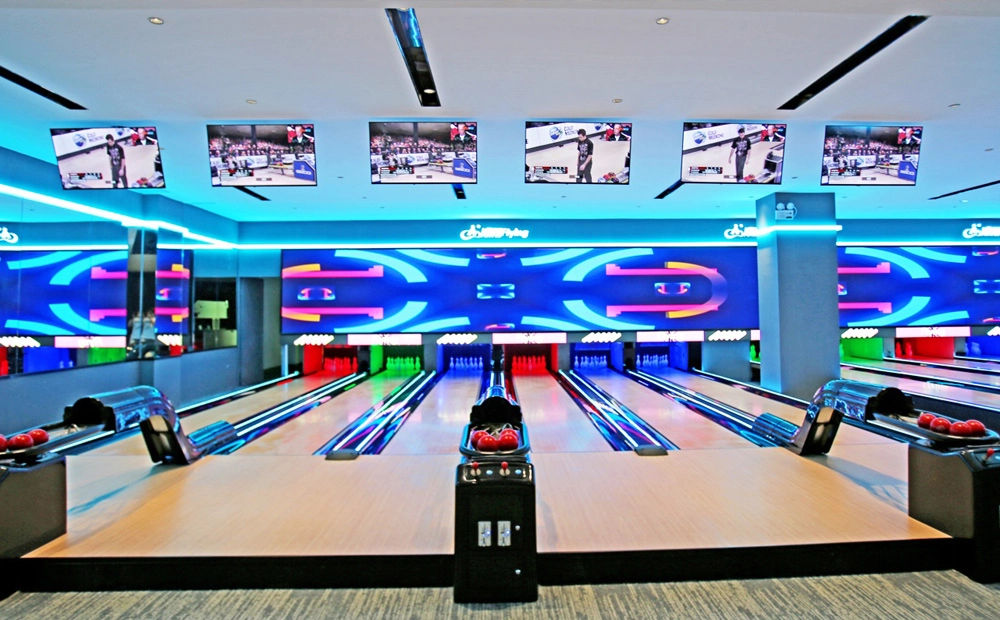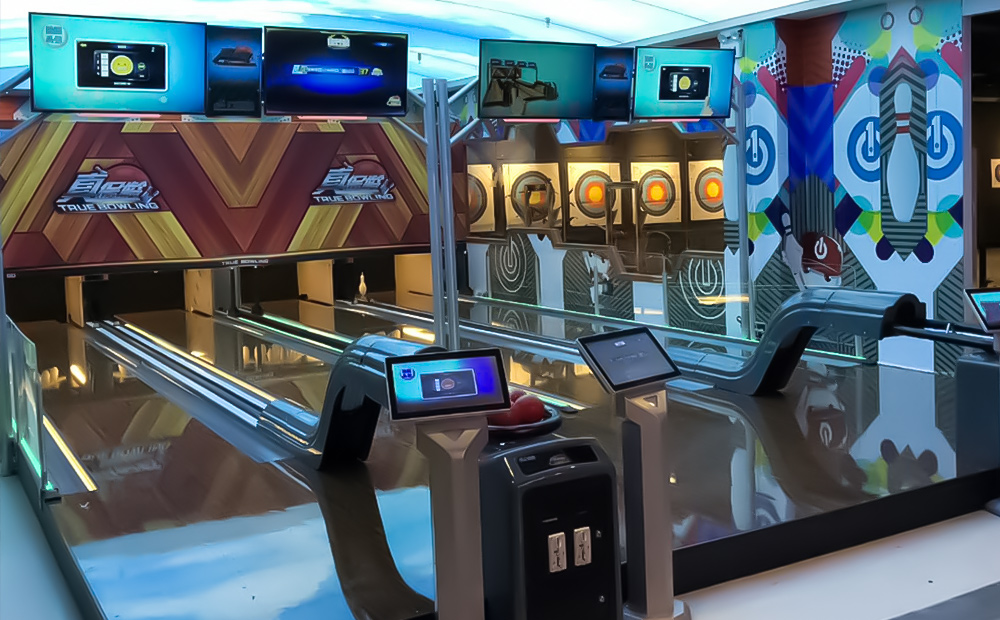Mini Bowling Machines: A Buyer's Guide
- Mini Bowling Machines: A Guide to Finding the Best Bowling Machine for Sale
- Flying Technology and Mini Bowling Machines
- Mini Bowling Machines For Sale
- Types of Mini Bowling Machines
- Top Features to Consider
- Latest Trends in Mini Bowling Machines
- Buying Guide for Mini Bowling Machines
- Benefits of Mini Bowling Machines
- Maintenance and Care Tips
- Conclusion
- FAQs:
Mini Bowling Machines: A Guide to Finding the Best Bowling Machine for Sale
In this article, we will explore different types of mini bowling machines and provide tips on finding the best one for sale. Whether you are a bowling enthusiast looking to practice at home or a business owner interested in adding a mini bowling attraction to your establishment, we've got you covered. From the latest trends in mini bowling machines to the top features to consider, this comprehensive guide will help you make the right choice.
Flying Technology and Mini Bowling Machines
Flying Technology has become a trusted name in the world of mini bowling machines. Their dedication to research and development and a commitment to technological innovation, quality, and service have made them a top choice for digital sports franchises worldwide. With their expertise and reputation, they are the go-to supplier for mini bowling machines for sale.
Mini Bowling Machines For Sale
When it comes to enjoying a game of bowling, mini bowling machines have become a popular choice. Whether for personal use or business purposes, finding the best mini bowling machine for sale requires careful consideration. This article aims to provide valuable insights into the different types of mini bowling machines available and how to choose the right one.
Types of Mini Bowling Machines
Explore the various types of mini bowling machines, including home-use models and commercial-grade options. Learn about the differences in size, features, and functionalities, and how to determine the best fit for your needs.
Top Features to Consider
Discover the essential features to look for in a mini bowling machine, such as lane length, scoring systems, ball return mechanisms, and more. Understanding these key features will help you narrow down your options and make an informed decision.
Latest Trends in Mini Bowling Machines
Stay updated on the latest innovations and advancements in mini bowling machine technology. From interactive displays to customizable themes, we'll delve into the cutting-edge trends shaping the mini bowling machine market.
Buying Guide for Mini Bowling Machines
Get expert tips on where to find the best deals on mini bowling machines for sale. Whether you're shopping online or through authorized dealers, we'll share valuable advice for making a smart purchase.
Benefits of Mini Bowling Machines
Explore the benefits of owning a mini bowling machine, from honing your bowling skills to attracting customers and increasing revenue for your business. Discover how mini bowling machines can add value to your personal or commercial use.
Maintenance and Care Tips
Learn about the proper maintenance and care routines to keep your mini bowling machine in top condition. From cleaning and lubricating to troubleshooting common issues, we'll provide essential guidelines for prolonging the lifespan of your machine.
Conclusion
In conclusion, finding the best mini bowling machine for sale requires thorough research and consideration of various factors. Whether you're aiming for personal enjoyment or business growth, choosing the right mini bowling machine is crucial. With the insights provided in this article, we hope you can make an informed decision and enjoy the benefits of owning a mini bowling machine.
FAQs:
Q: Can I use a mini bowling machine at home for personal practice?
A: Yes, there are specific mini bowling machines designed for home use, allowing you to enjoy the excitement of bowling in the comfort of your own space.
Q: Are mini bowling machines suitable for commercial businesses?
A: Absolutely. Mini bowling machines are a popular attraction for businesses such as arcades, family entertainment centers, and bowling alleys, offering a fun and engaging experience for visitors.
Q: What are the key differences between home-use and commercial-grade mini bowling machines?
A: Home-use machines are typically smaller in size and designed for personal enjoyment, while commercial-grade machines are larger, more robust, and built to withstand heavy usage in commercial settings.
Q: How can I ensure the longevity of my mini bowling machine?
A: Regular cleaning, lubrication, and proper maintenance routines are crucial for preserving the performance and lifespan of your mini bowling machine.
Q: Where can I find reputable sellers offering mini bowling machines for sale?
A: You can find authorized dealers and reliable online stores that specialize in mini bowling machines, ensuring you get a quality product with after-sales support.
Recommended products

Brand New String Pinsetter Mini Bowling Equipment Small Ball And Pin

Flying Smart Duckpin Bowling

Flying Ultra Standard Bowling String Pinsetter

Complete Set Of String Pinsetter Bowling Lane Equipment

Indoor Medium Duckpin Bowling Lane Equipment For Bowling Alley
Price
How much does it cost to build a 2 lane home bowling alley?
Building a 2-lane bowling alley in your home can be a fun and luxurious addition, but it comes with a significant cost. Here's a breakdown of what to expect:
Price range: Expect a ballpark figure of $120,000 to $195,000 [US dollars] for two lanes of traditional ten-pin bowling. This includes lane equipment, installation, and basic functionality for a home setting.
Variations: This cost can be highly influenced by your desired features and customizations. Here are some factors that can push the price higher:
Upgraded equipment: Automatic scoring systems, lane lighting systems, or high-performance lane surfaces will all add to the cost.
Construction considerations: The cost of preparing the space in your home might vary depending on the existing structures, plumbing, and electrical work needed.
How much does a bowling lane cost ?
The cost of a single bowling lane falls between $75,000 and $80,000 for a standard lane. Here's a breakdown considering different factors:
New vs. Used:
New lanes naturally cost more than used ones.
Features:
Automatic scoring systems or other customizations can increase the price.
Home vs. Commercial:
Lane installations for homes may cost slightly more to account for special adjustments.
It's important to note that this is just the lane itself. The total cost of building an entire bowling alley will include additional costs for installation, surrounding infrastructure, and any amenities you include.
Bowling Equipment
How much to put a bowling lane in your house?
Building a bowling alley in your house may seem very expensive. But at Flying, you can get top-quality bowling equipment from us at very affordable prices. You can have the fun of bowling at home without requiring a lot of money or effort.
What basic equipment is needed for bowling?
Bowling needs lots of equipment, but the most important parts are the fairway boards and the string pinsetter equipment.
What are the equipment and parts used in bowling?
It is mainly divided into equipment and fairway board parts. The equipment part mainly includes a ball-return machine, ball-up machine, lane computer, string pinsetter machine, etc. The fairway board part includes the gutter, fairway board, etc. The most important sections are the lane management system and the lane scoring system. Please feel free to contact us for a detailed equipment configuration list.
You may also like

Flying Smart Duckpin Bowling (FSDB) innovative design, standard 9.2-meter short lane, can be shortened in length, compact layout suitable for small spaces. The game rules are simple but challenging, attracting players of different ages to actively participate.
Suitable for social entertainment venues such as bars, billiard halls, and game centers, it not only enhances interactivity but also increases the popularity and consumption frequency of the venue. The fun and competitive nature of FSDB will make it a new focus of social activities.

Flying Classic Standard Bowling (FCSB) is designed according to international competition standards and equipped with an accurate automatic scoring system, providing bowling enthusiasts with a pure professional experience. Whether it is for competitions or leisure entertainment, FCSB can meet high-level needs.
Suitable for family entertainment centers, luxury resorts, private villas, or clubs, it is an ideal choice for customers who pursue high-end quality and professional experience. Its classic design and excellent performance will add lasting appeal to the venue.

Flying Cute Mini Bowling (FCMB) is a mini bowling experience designed for children and families. The lane length is fixed at 12 meters, equipped with lightweight balls without finger holes (only 1.25kg) and small pins, specially designed for children and family fun.
It can not only help children feel the fun of bowling, but also stimulate their interest and competitive consciousness. Suitable for children's playgrounds, theme parks and parent-child centers, it is the best choice for places focusing on the children's market.

Flying Social Medium Bowling (FSMB) is tailored for small venues, with flexible lane lengths (customizable from 9.6 meters to 18 meters), a small ball design suitable for players of all ages, and light pins that are easier to knock down, increasing participation and fun.
Whether it is a gathering of friends or a casual social, FSMB can easily create a relaxed and pleasant atmosphere. Its efficient space-utilization design is particularly suitable for cafes, bars and community entertainment venues, allowing people to fall in love with bowling in a relaxed interaction.
Contact Flying
Start your bowling alley project
If you contact us now for more details, we can provide you with a custom bowling alley service. Our service team will get back to you within 24 hours normally!
© 2025 Flying BOWLING. Designed by gooeyun.
FOLLOW US:




Flying Bowling
Flying Bowling
Flyingbowling
Flyingbowling